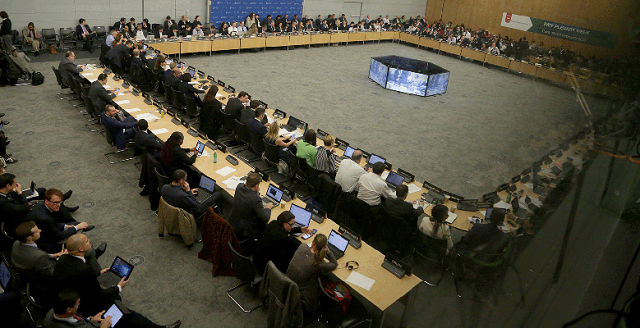Demystifying FATF’s Grey List
Irrespective of anomalies, government cannot absolve itself of the responsibility of creating embarrassment

PHOTO: FATF
The FATF is an inter-governmental body established in 1989 to combat money laundering, terrorist financing and other related threats. FATF maintains two different lists of countries: those that have deficiencies in their AML/CTF regimes but they commit to an action plan to address these loopholes, and those that do not end up doing enough. The former is commonly known as grey list and latter as blacklist.
Once a country is blacklisted, FATF calls on other countries to apply enhanced due diligence and counter measures, increasing the cost of doing business with the country and in some cases severing it altogether. As of now there are only two countries in the blacklist — Iran and North Korea — and seven on the grey list, including Pakistan, Sri Lanka, Syria and Yemen.
Earlier this year, FATF nominated Pakistan for inclusion in grey list. This necessitated an independent assessment of Pakistan’s AML/CTF regime, highlighting various loopholes. It is important to note that this assessment was not about actual incidence of money laundering or terrorism financing and rather about absence or weakness of controls that make the country vulnerable to such risks.
Many believe that Pakistan’s placement in the grey list is unjustified. There are many other countries with much higher risks that are nowhere to be found on either the grey or the black list. The Anti Money Laundering Index of Basel Institute of Governance ranks 146 countries, based on money laundering and terrorist financing risk, corruption, public transparency and accountability, etc. Although Pakistan’s score on the index had been worsening in recent years, it has never been ranked as an extremely high-risk country. In 2017, Pakistan was ranked 46, meaning thereby that there were 45 other countries that have higher AML/CTF risks than Pakistan. Interestingly, most of these countries like Afghanistan, Sudan and Nigeria that were ranked 2, 29 and 33, respectively, have not been nominated for inclusion in the grey list.
Furthermore, it is not the first time that Pakistan is placed on the grey list. In fact it was as recently as 2015, when Pakistan last got out of this list. But the way it has been highlighted in media this time around is unprecedented.
Irrespective of these anomalies however, the government cannot absolve itself of the responsibility of creating embarrassment at such a critical juncture when the country is looking to attract investment under CPEC. It is likely to shatter investor confidence and take a serious toll on FDI, remittances and trade, further worsening the balance-of-payments crisis.
What’s really worrying is that Pakistan’s inclusion in the grey list is not an isolated incident. The UK’s National Crimes Agency’s National Strategic Assessment of Serious and Organised Crime in 2018 found out that Pakistan was one of the five countries with most persistent impact across most of money laundering threats in the UK. Moreover, Pakistan is one of the three most ‘commonly seen’ source countries for politically exposed persons investing in the UK. The International Narcotics Control Strategy Report in 2014 also noted that the black market economy in Pakistan was generating substantial demand for money laundering and illicit financing.
The problem therefore is much larger than extremist religious organisations that are frequently mentioned in news reports and also includes vast amount of black money that is being laundered abroad. The vested interests of those involved have kept these channels open, also providing conduits for terrorism financing.
But now the clock is ticking. Pakistan will have to walk the talk of tightening its AML/CTF regime within the next 15 months or else the grey list can very well prove to be the gateway to the blacklist.
Published in The Express Tribune, July 3rd, 2018.
Like Opinion & Editorial on Facebook, follow @ETOpEd on Twitter to receive all updates on all our daily pieces.

















COMMENTS
Comments are moderated and generally will be posted if they are on-topic and not abusive.
For more information, please see our Comments FAQ